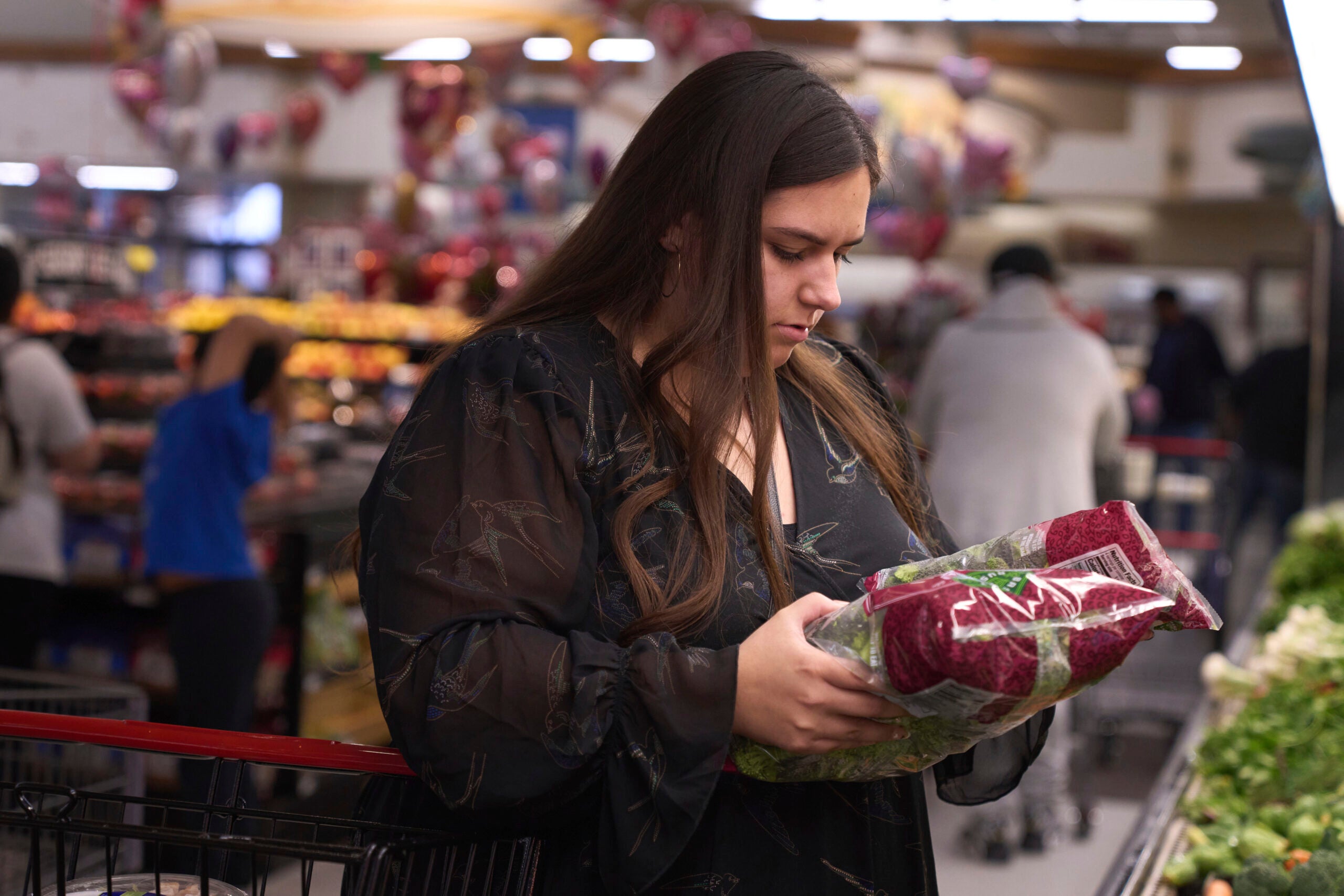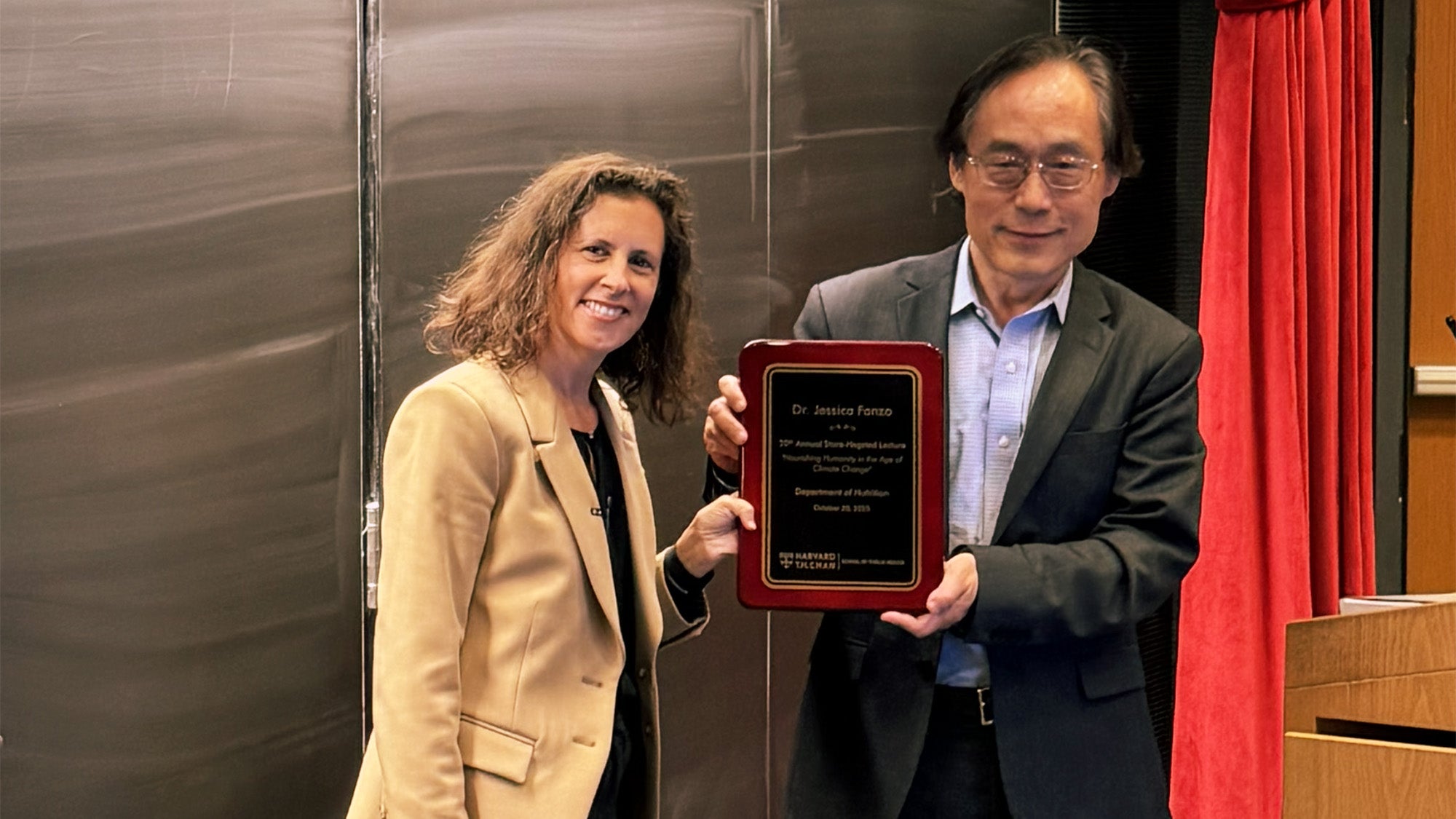As part of the “One Big Beautiful Bill Act” signed into law in July, federal funding for the Supplemental Nutrition Assistance Program (SNAP) was cut by $187 billion through 2034. It’s estimated that about 4 million people will see their food assistance cut or substantially reduced. Harvard T.H. Chan School of Public Health’s Erica Kenney and Cindy Leung, both associate professors of public health nutrition, share their reactions to the massive spending cut and discuss the implications for SNAP recipients.
How effective is SNAP when it comes to reducing food insecurity?
Leung: SNAP is our main lever to address food insecurity and also improve diet for low-income American families. The research is pretty strong in showing that SNAP achieves that first goal. Studies from various groups, including the USDA, have shown that it can reduce food insecurity by 30%. And it’s particularly effective for reducing food insecurity among those that had severe food insecurity when they were applying into the program.
We know that food insecurity is associated with poor diet quality, increased risk for multiple cardiometabolic diseases, and, for older adults, higher risk of cognitive impairment and dementia. I think we’re going to see a lot of these conditions become exacerbated in populations with low incomes and that is exactly who SNAP is trying to serve. SNAP has been the main line of defense against poverty and hunger for decades and we’ve seen that when you expand SNAP as we did during COVID, we saw decreases in food insecurity at the national level, and those were sustained as long as those benefits were increased. As soon as the benefits dropped we saw increases in food insecurity.
The evidence around SNAP in changing diet quality or dietary behaviors is more mixed. And I think that’s because healthy food intake is affected by so many factors, income and other financial resources being important drivers. But for SNAP participants in particular, if they have limited access to healthy foods in their environment, if they have more time constraints, if they’re already facing chronic diseases that lead them to need special diets to begin with, healthy foods are just harder to access.
What does research show about the impacts of SNAP on health care costs?
Leung: Because of its ability to help with the income resources of a household, SNAP has been shown to reduce health care expenditures, particularly for conditions like heart disease or hypertension. One study that has shown that SNAP participants have $1,400 less medical care costs per year compared to low-income non-participants. So when we invest in SNAP, we know that it reduces food insecurity, reduces health care expenditures, and also generates economic activity.
Kenney: It’s also been associated with reduced workplace absences and fewer emergency room visits. For children, SNAP has been associated with lower incidence of low birth weight, so people who are pregnant and on SNAP have healthier pregnancies as well.
The recent bill also eliminates the SNAP-Ed program after this year. What is SNAP-Ed and why do you think policymakers are ending the program?

Leung: SNAP-Ed is the nutrition education program that’s embedded within the SNAP program. It basically paid for people like me (in my former career I worked at a food bank) to hold nutrition education workshops, develop nutrition education materials and teach participants how to cook and shop for healthy meals so that participants could better adhere to a healthier diet.
I wish I had a better sense of what the policymakers were thinking, and how this aligned with Make America Healthy Again (MAHA). It does seem very counterintuitive when you eliminate nutrition education funding, especially when it was such a very small percentage of the overall SNAP budget. People need to have the knowledge and the awareness from SNAP-Ed, as well as the accessibility to healthy foods from the SNAP program, in order to be healthy and live a healthy lifestyle.
Kenney: In addition to the nutrition education that Cindy mentioned, SNAP-Ed is also one of the major sources of community-based public health nutrition programming for everybody, not just SNAP participants. These are evidence-based programs that work.
I agree with Cindy. I don’t know how ending SNAP-Ed can possibly align with the MAHA agenda.
Is there a strong enough non-public safety net that could step in to fill in the gap left by the cut in federal funding to the SNAP program?
Leung: I don’t think there is much out there if you don’t have SNAP. SNAP is irreplaceable. It’s the only nutrition assistance program under USDA that targets all Americans. You don’t have to be a child under a certain age threshold; you don’t have to be pregnant or nursing an infant in order to qualify for benefits; you don’t have to be a senior citizen living in a certain type of facility to receive benefits. I think that is why the provisions in the one big, beautiful bill are so threatening to public health. Millions of Americans in all 50 states and all U.S. territories are going to lose their benefits, or at least see their benefits be reduced, and the implications of that for food insecurity and health disparities are very alarming.

Kenney: There are some other options such as WIC (Special Supplemental Nutrition Program for Women, Infants, and Children), which is a program for pregnant and postpartum parents and infants and young children. But that’s just for that population, and it’s not meant to be a replacement for SNAP.
I think we’re going to see a lot of people relying more on the charitable food system, such as food banks and pantries. But those programs are not going to replace the kinds of support that people were able to get from SNAP. And though SNAP is wonderful, it still doesn’t give people a ton of money, it’s not like people are able to cover all of their food needs with SNAP benefits. The charitable food system can really only make up a small percentage of that, and they’re being squeezed as well.
One of the major changes to SNAP will be stricter work requirements, which will reduce participation in the program by about 2.4 million people. Critics of SNAP applauded this action, arguing that too many participants who were able to work haven’t been. What’s your take? What does the SNAP population look like?
Leung: SNAP serves mostly households with children as well as households with older adults or disabled persons. A significant proportion, about 38%, of SNAP participating households are working. So these are households with people who are generating income but not at levels high enough to make them ineligible for SNAP. At the same time, people typically who go on SNAP go on it for a few months at a time, and then they find employment. Their income goes up or something about their situation changes and then they come off the program. So SNAP doesn’t target families who stay on the program for years and years at a time, although there are exceptions to that.
What we see is that the people who are getting SNAP benefits are usually the most vulnerable, with severe food insecurity. We also know people only get SNAP if they’ve really exhausted their other resources—they don’t have more money left in their savings account, they don’t have family or friends that they can ask to borrow money, they can’t find stable employment or any employment. So SNAP is really seen as a last resort because of the amount of work it takes to get on SNAP benefits. People usually don’t want to start that process until they know that it’s what they have to do now to survive. And when we’ve talked with people on SNAP, we’ve heard continuously that SNAP is a lifesaver. SNAP has helped them out when they were in their most dire situation.
Kenney: I think work requirements really activate for a lot of people this narrative that there’s this unfair thing going on where people are being lazy and they’re not working and SNAP is enabling them to not work. And that narrative is just not true. All available evidence suggests that work requirements don’t actually improve anything in terms of employment or in terms of earnings. They just make life harder for people. SNAP isn’t the reason why some folks are unemployed.
Leung: I also want to add that the work requirements are now being imposed on groups that didn’t have them before; that includes veterans, people who are experiencing homelessness, former foster youth, as well as older adults, ages 55 to 64. These are groups that may experience more job-related or workplace discrimination and that have difficulties finding stable employment. Their participation in SNAP will likely be reduced because they can’t meet these new work requirements.
Final thoughts?
Kenney: This is the largest cut SNAP has ever seen in its history. I’m worried about what’s going to happen to a lot of households. I’m worried about kids in particular. But I’m also worried about the population in general. I think that there are a lot of ways that this could negatively impact public health and I’m very concerned about what’s going to happen in the future.
Leung: I echo that. I think SNAP is undergoing some historically unprecedented changes, and never in the last many decades since SNAP has been around have we seen cuts to the program and changing the responsibility of the program to the states at this level, even through the Great Recession, through COVID, through the first Trump administration. We’ve seen SNAP grow and we can document the benefits of what happens when you make sure that everyone who’s eligible for SNAP can access their benefits. I share in Erica’s concern about how the ramifications of the cuts could last long past the current administration.



